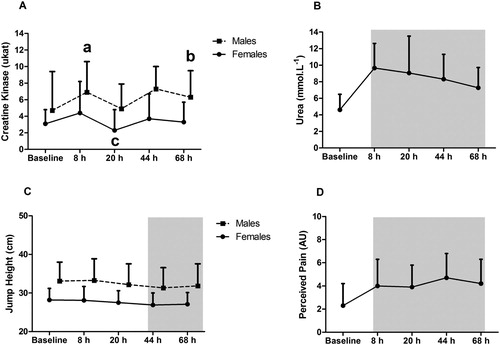Figures & data
Table 1. Mean ± standard deviation descriptive characteristics of the senior and junior female and male cross-country skiers.
Table 2. Mean ± standard deviation race time, heart rate and post-race peak blood lactate concentration in senior and junior female and male skiers.
Table 3. Mean ± standard deviation responses for recovery parameters in the control (CON, n = 10), compression (COMP, n = 11) and neuromuscular electrical stimulation (NMES, n = 11) group at baseline, 8, 20, 44 and 68 h after a cross-country sprint skiing competition.
Figure 1. Creatine kinase (A), urea (B), countermovement jump (C) and perceived muscle pain (D) values for the three recovery groups combined (CON, COMP and NMES) at baseline, and 8, 20, 44 and 68 h after a cross-country sprint skiing competition. Time points included within the shaded regions are significantly different from baseline (P < .05). Significantly different from baseline in males (a, b) and females (c) (P < .05).

